
The Rolls-Royce Merlin is a British liquid-cooled V-12 piston aero engine of 27-litre capacity. Rolls-Royce designed the engine and first ran it in 1933 as a private venture. Initially known as the PV-12, it was later called Merlin following the company convention of naming its four-stroke piston aero engines after birds of prey. The engine benefitted from the racing experiences of precursor engines in the 1930s.

The Supermarine Seafire is a naval version of the Supermarine Spitfire adapted for operation from aircraft carriers. It was analogous in concept to the Hawker Sea Hurricane, a navalised version of the Spitfire's stablemate, the Hawker Hurricane. The name Seafire was derived from the abbreviation of the longer name Sea Spitfire.

The Miles M.14 Magister is a two-seat monoplane basic trainer aircraft designed and built by the British aircraft manufacturer Miles Aircraft. It was affectionately known as the Maggie. It was authorised to perform aerobatics.

The Supermarine Attacker is a British single-seat naval jet fighter designed and produced by aircraft manufacturer Supermarine for the Royal Navy's Fleet Air Arm (FAA). It was the first jet fighter to enter operational service with the FAA.

A slip is an aerodynamic state where an aircraft is moving somewhat sideways as well as forward relative to the oncoming airflow or relative wind. In other words, for a conventional aircraft, the nose will be pointing in the opposite direction to the bank of the wing(s). The aircraft is not in coordinated flight and therefore is flying inefficiently.

The British Supermarine Spitfire was facing several challenges by mid-1942. The debut of the formidable Focke-Wulf Fw 190 in late 1941 had caused problems for RAF fighter squadrons flying the latest Spitfire Mk Vb. Rolls-Royce engineers were already working on a new version of the Merlin incorporating a two-stage supercharger; the combination of the improved Merlin and the Spitfire Mk Vc airframe in a "stop-gap" design allowed the RAF to combat the Fw 190 on equal terms.

The Helio Courier is a cantilever high-wing light STOL utility aircraft designed in 1949.

The Aero Boero AB-115 is an Argentine civil utility aircraft. It was developed from the AB-95-115, a refined AB-95 with a more powerful engine and improved aerodynamics. Specific differences included wheel spats, a redesigned engine cowling molded of fiberglass, and aluminum ailerons and flaps.
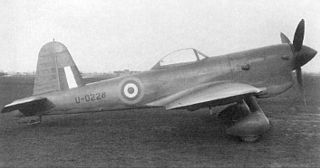
The Miles M.20 was a Second World War British fighter developed by Miles Aircraft in 1940. It was designed as a simple and quick-to-build "emergency fighter" alternative to the Royal Air Force's Spitfires and Hurricanes should their production become disrupted by bombing expected in the anticipated German invasion of the United Kingdom. Due to the subsequent shifting of the German bombing effort after the Battle of Britain towards British cities in what became known as The Blitz, together with the dispersal of British fighter manufacturing, the Luftwaffe's bombing of the original Spitfire and Hurricane factories did not seriously affect production, and so the M.20 proved unnecessary and the design was not pursued.
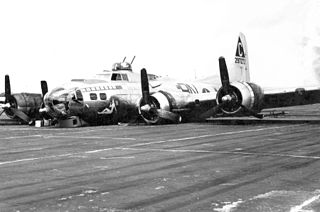
A belly landing or gear-up landing occurs when an aircraft lands without its landing gear fully extended and uses its underside, or belly, as its primary landing device. Normally the term gear-up landing refers to incidents in which the pilot forgets to extend the landing gear, while belly landing refers to incidents where a mechanical malfunction prevents the pilot from extending the landing gear.
GUMPS is an acronym widely used by retractable gear aircraft pilots as a mental checklist to ensure nothing critical has been forgotten before landing. Its popularity is widespread, appearing in flight student curricula, FAA publications and aviation magazines.

The Grob G109 is a light aircraft developed by Grob Aircraft AG of Mindelheim Mattsies in Germany. It first flew in 1980. The G109B followed in 1984. It is a two-seat self-launching motor glider in which the pilot and passenger or student sit side by side, with good visibility provided by large windows.

The Parnall Heck was a 1930s British four-seat cabin monoplane built by Parnall Aircraft Limited at Yate, Gloucestershire. Originally a Hendy design, few were built. It combined the strength and comfort of a cabin aircraft with the speed of a racer.
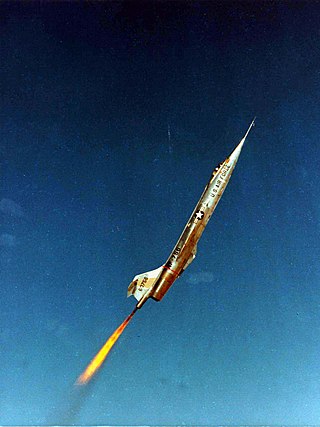
The Lockheed NF-104A was an American mixed-power, high-performance, supersonic aerospace trainer that served as a low-cost astronaut training vehicle for the North American X-15 and projected Boeing X-20 Dyna-Soar programs.

Supermarine Spitfire variants powered by early model Rolls-Royce Merlin engines mostly utilised single-speed, single-stage superchargers. The British Supermarine Spitfire was the only Allied fighter aircraft of the Second World War to fight in front line service from the beginnings of the conflict, in September 1939, through to the end in August 1945. Post-war, the Spitfire's service career continued into the 1950s. The basic airframe proved to be extremely adaptable, capable of taking far more powerful engines and far greater loads than its original role as a short-range interceptor had called for. This would lead to 19 marks of Spitfire and 52 sub-variants being produced throughout the Second World War, and beyond. The many changes were made in order to fulfil Royal Air Force requirements and to successfully engage in combat with ever-improving enemy aircraft. With the death of the original designer, Reginald J. Mitchell, in June 1937, all variants of the Spitfire were designed by his successor, Joseph Smith, and a team of engineers and draftsmen.
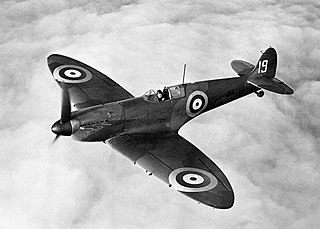
The British Supermarine Spitfire was one of the most popular fighter aircraft of the Second World War. The basic airframe proved to be extremely adaptable, capable of taking far more powerful engines and far greater loads than its original role as a short-range interceptor had allowed for. This would lead to 24 marks of Spitfire, and many sub-variants within the marks, being produced throughout the Second World War and beyond, in continuing efforts to fulfill Royal Air Force requirements and successfully combat ever-improving enemy aircraft.

The Supermarine Spitfire is a British single-seat fighter aircraft used by the Royal Air Force and other Allied countries before, during, and after World War II. It was the only British fighter produced continuously throughout the war. The Spitfire remains popular among enthusiasts. Around 70 remain airworthy, and many more are static exhibits in aviation museums throughout the world.
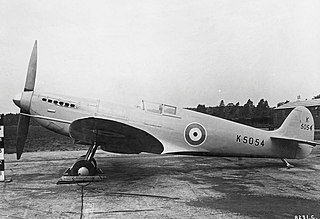
The Supermarine Spitfire was developed in the mid-1930s as a short-range, high-performance interceptor aircraft by chief designer R. J. Mitchell.

Trans World Airlines Flight 5787 was an unscheduled training flight of a Boeing 707 from Atlantic City Airport in Pomona, New Jersey in 1969. The flight was planned as a proficiency check, testing crew response to a simulated single-engine failure during takeoff and landing. Because of a fatigue failure of a hydraulic pipe, hydraulic power was lost while flying at low speed on three engines, resulting in loss of control and a crash killing all on board.